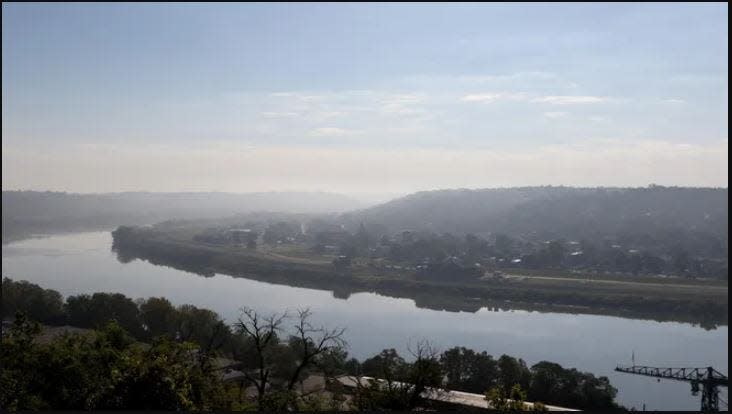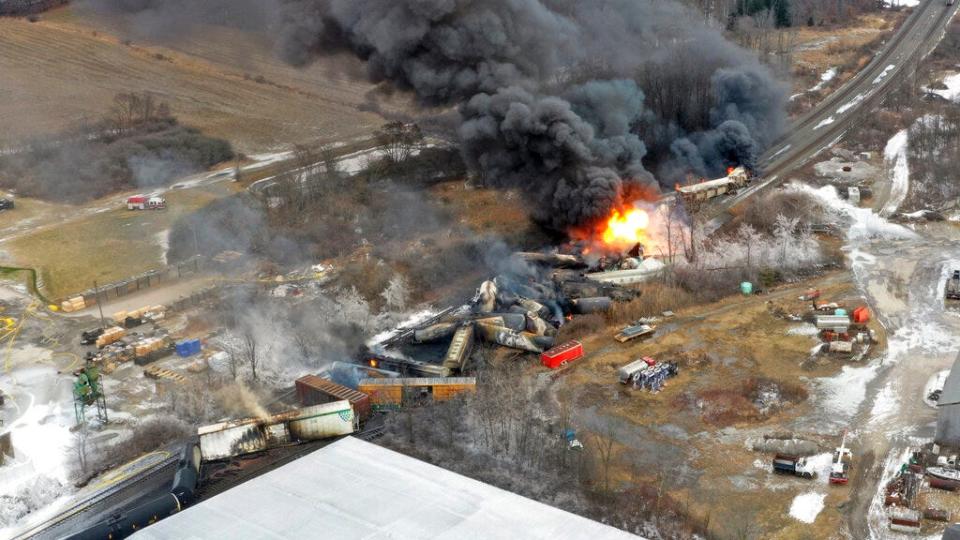Cincinnati, NKY utilities reopen water intake after no chemicals detected

Greater Cincinnati Water Works and the Northern Kentucky Water District reopened their intakes to the Ohio River on Monday after no chemicals were detected. Both utilities shut off the intakes around 2 a.m. on Sunday in anticipation of water containing low levels of chemicals coming from East Palestine, Ohio.
A fiery derailment of about 50 freight cars, 11 of which contained hazardous materials, occurred in East Palestine on Feb. 3. There were concerns that chemicals from the derailment had contaminated the Ohio River and intakes were closed as a cautionary measure over the weekend.
After the shutdown, a compound called 2-Ethyl-1-hexanol was detected in the region, Jeff Swertfeger, superintendent of water quality and treatment for Greater Cincinnati Water Works, said. Cincinnati and Northern Kentucky utilities kept their intakes shut off due to the chemical, but it was no longer detected on Monday and the intakes were deemed safe to reopen.
What is 2-Ethyl-1-hexanol?
The compound 2-Ethyl-1-hexanol is used in industrial applications including flavorings and fragrances. Swertfeger said the waterworks cannot confirm the origin of the compound because it's a fairly common solvent. However, he said it was detected in streams near East Palestine.
Visits from Trump, Erin Brockovich: The latest on the East Palestine train derailment
Is there acid rain in Ohio? What to know after East Palestine train derailment

How long can the water intakes be shut off?
While the intake to the Ohio River was shut off, the waterworks used its water reserves, which are free from containments related to the train derailment, to serve its 1.1 million customers in Cincinnati. Water in the reserves is drawn mostly from the Ohio River, Swertfeger said, and partially treated to be kept ready for use.
The waterworks keeps about two to three days' worth of stored raw water and one day's worth of ready-to-drink treated water, Kevin Osborne, division manager for the utility, told The Enquirer last year.
Is Cincinnati tap water safe to drink?
No chemicals were detected near the intake, which allowed it to be reopened on Monday. The waterworks will continue to sample and test water samples near the Ohio River water intake.
"We're not forgetting about this," Swertfeger said.
In a press release, the utility said it also plans to use "additional optimized treatment" for the water after intakes are reopened.
Ohio Sens. Sherrod Brown and J.D. Vance sent a letter to state and federal Environmental Protection Agency officials on Saturday urging them to test for dioxins, highly toxic pollutants that can cause cancer. Dioxin can get into drinking water, according to the EPA.
Swertfeger said a possible threat of dioxins is "something that we're gonna keep an eye on."
Gov. Mike DeWine: Ohio River is safe as water from East Palestine approaches Cincinnati
East Palestine train derailment: A timeline of what happened when
What chemicals were detected upstream?
The most recent testing from the Ohio River Valley Water Sanitation Commission and Water Works showed low levels of chemicals from the train derailment upstream, according to data from the two agencies. Quantifiable low levels of butyl acrylate were detected in Mason, West Virginia, on Feb. 16, and in Gallipolis, Ohio, on Feb. 17.
Why was the Ohio River intake shut off?
Greater Cincinnati Water Works announced it would shut off its intake to the Ohio River around the same time Ohio Gov. Mike DeWine said the plume of butyl acrylate – a compound used in paints, plastics and other products that leaked into the river after the train derailment – had dissipated.
The utility stuck with its plan to shut off the intake to exercise extreme caution, which Swertfeger said is protocol.
"That's always our plan when we know there's a threat to the river," he said. "Our first instinct is to shut down, investigate what's going on and then reopen when we think it's safe."
This article originally appeared on Cincinnati Enquirer: Ohio train derailment: Cincinnati, NKY utilities reopen water intakes

